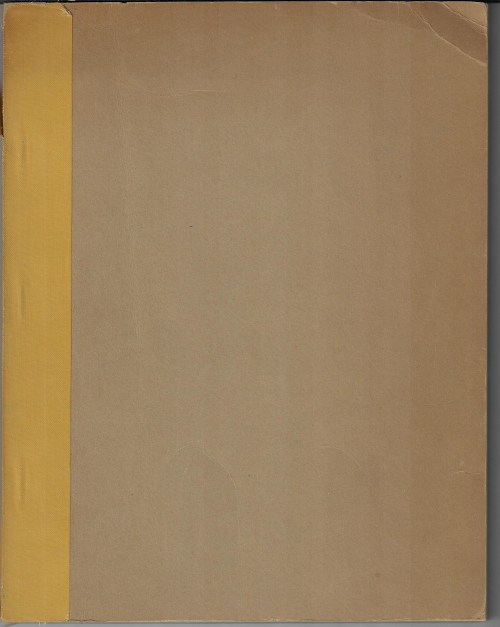 von Neumann, John: Continuous Geometry; Princeton: Institute for Advanced Study, 1936. 1st printing.
von Neumann, John: Continuous Geometry; Princeton: Institute for Advanced Study, 1936. 1st printing.
11x8.5", 72pp Cloth-backed stiff wrappers. First edition. Very Good condition. This version of Continuous Geometry is made from the notes taken by Dr. L. Roy Wilcox and printed via an offset (?) process, then stapled and bound in a cloth tape format.
Scarce. There would be an expanded version of this work published in 1938, and another, again, in 1960. $850
"In his work on rings of operators in Hilbert space, John von Neumann discovered a new mathematical structure that resembled the lattice system Ln. In characterizing its properties, von Neumann founded the field of continuous geometry.This book, based on von Neumann's lecture notes, begins with the development of the axioms of continuous geometry, dimension theory, and--for the irreducible case--the function D(a). The properties of regular rings are then discussed, and a variety of results are presented for lattices that are continuous geometries, for which irreducibility is not assumed. For students and researchers interested in ring theory or projective geometries, this book is required reading."This historic book should be in the hands of everyone interested in rings and projective geometry."--R. J. Smith, The Australian Journal of Science"Much in this book is still of great value, partly because it cannot be found elsewhere ... partly because of the very clear and comprehensible presentation. This makes the book valuable for a first study of continuous geometry as well as for research in this field."--F. D. Veldkamp, Nieuw Archief voor Wiskunde"--via Google Books
"In mathematics, continuous geometry is an analogue of complex projective geometry introduced by von Neumann (1936, 1998), where instead of the dimension of a subspace being in a discrete set 0, 1, ..., n, it can be an element of the unit interval [0,1]. Neumann was motivated by his discovery of von Neumann algebras with a dimension function taking a continuous range of dimensions, and the first example of a continuous geometry other than projective space was the projections of the hyperfinite type II factor."--Wiki on "continuous Geometry"




Comments